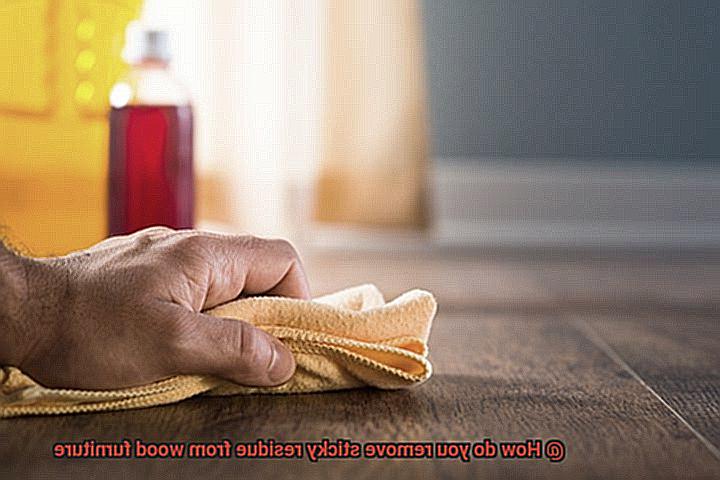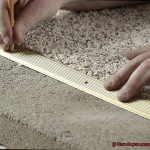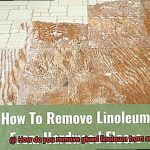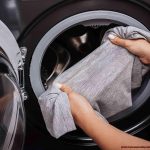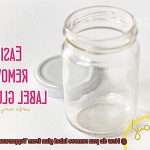We all know the struggle of dealing with sticky residue on our beloved pieces.
It’s like having a stubborn guest overstaying their welcome on your beautiful wooden table or chair. But fear not, because I’m here to spill the beans on how to banish that pesky stickiness for good.
Get ready to unleash the power of some household heroes and witness your wood furniture regain its former glory. In this blog post, we’re diving deep into the world of sticky residue removal from wood furniture.
So, grab your cleaning gear and let’s get down and dirty with these fascinating techniques.
What Causes Sticky Residue on Wood Furniture?
Contents
- 1 What Causes Sticky Residue on Wood Furniture?
- 2 How to Remove Sticky Residue Using a Solvent
- 3 Removing Sticky Residue with Dish Soap and Water
- 4 Removing Sticky Residue with Oil-Based Products
- 5 Scraping Off Stubborn Sticky Residue
- 6 Cleaning and Conditioning the Wood After Removal
- 7 Testing Cleaning Solutions Before Use
- 8 Preventative Maintenance
- 9 Conclusion
Sticky residue on wood furniture can be a frustrating eyesore that detracts from the natural beauty of your pieces. But fear not. In this article, we’ll delve into the various causes of sticky residue on wood furniture and provide you with effective solutions to restore their luster.
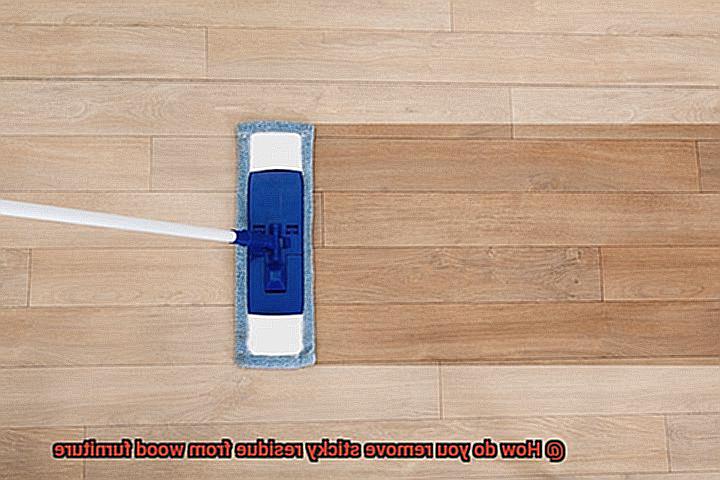
Cleaning Products:
Certain cleaning products, especially those infused with oils or silicone, can leave behind a greasy film that becomes a magnet for dirt and dust. To avoid this, opt for gentle cleaners specifically formulated for wood surfaces. Follow the instructions carefully and refrain from overusing the cleaner.
Oils and Waxes:
Regular use of furniture polish or other wood-enhancing products can gradually lead to a buildup of oils and waxes. While these products initially create a dazzling shine, they can accumulate over time and leave behind an unpleasant sticky residue. Combat this by regularly cleaning your furniture with a mild solution of dish soap and warm water to eliminate any residue.
Environmental Factors:
High humidity levels can cause the natural oils within the wood to rise to the surface, resulting in a sticky sensation. Additionally, prolonged exposure to heat or direct sunlight can soften finishes and make them tacky. To prevent this, ensure proper ventilation in your home and avoid placing furniture in direct sunlight for extended periods.
Pest Infestation:
Pests such as insects or rodents can secrete substances that create a sticky surface on wood furniture. Regularly inspect your furniture for signs of infestation, such as small holes or chew marks, and take appropriate pest control measures if necessary.
Effective Cleaning Techniques:
- Break down the sticky residue using gentle solvents like rubbing alcohol or white vinegar.
- Create a solution of dish soap and warm water to gently wipe away the affected area.
- Penetrate the residue with oil-based substances like mayonnaise or cooking oil, and then wipe it away with a clean cloth.
Prevention Tips:
- Clean up spills immediately to prevent them from turning into sticky residue.
- Avoid excessive use of furniture polish or other wood-enhancing products.
- Regularly maintain and condition your wood furniture to protect it from damage.
How to Remove Sticky Residue Using a Solvent
Removing sticky residue from wood furniture can be a challenging task. But fear not, because I have a secret weapon to share with you – solvents. Solvents are like magic potions that dissolve sticky residue, making your furniture shine again. In this blog post, I will teach you how to effectively and safely use solvents to remove sticky residue from your cherished wood furniture.
Choosing the Right Solvent:
Before we delve into the step-by-step process, it’s important to choose the right solvent for the job. Rubbing alcohol, nail polish remover, vinegar, and mineral spirits are all excellent options. However, keep in mind that different solvents work better on different types of sticky residue. So choose wisely to achieve the best results.
Step-by-Step Instructions:
- Test, Test, Test: Begin by testing the solvent on a small, hidden area of your furniture. This preliminary test ensures that the solvent won’t cause any damage or discoloration.
-
Apply the Solvent: Once you have successfully tested the solvent, apply a small amount onto a soft cloth or sponge.
- Gently Rub: Now comes the fun part. Gently rub the solvent-soaked cloth or sponge onto the sticky residue. Be thorough and cover the entire affected area.
- Let It Sit: Allow the solvent some time to work its magic. Let it sit on the sticky residue for a few minutes, allowing it to dissolve the adhesive and make removal easier.
- Wipe Away: After letting it sit, grab a clean cloth or sponge and wipe away the sticky residue. If it proves stubborn, apply a bit more pressure while being cautious not to damage the wood surface.
- Repeat if Necessary: For particularly tough or dried-on residue, you may need to repeat the process a few times. Don’t get discouraged. Persevere until your furniture is residue-free and revitalized.
Extra Tips and Precautions:
- Excessive moisture can damage wood surfaces, so avoid using excessive amounts of solvent or water.
- Protect your hands by wearing protective gloves when working with solvents.
- Always follow the manufacturer’s instructions when using specific solvents to ensure optimal safety and effectiveness.
Removing Sticky Residue with Dish Soap and Water
Removing sticky residue from wood furniture can be a frustrating task, but fear not. I have the perfect solution for you: dish soap and water. This powerful duo will work like magic to leave your furniture looking shiny and new.
To begin, gather your materials: dish soap, warm water, a clean cloth or sponge, and a bowl or bucket. Fill the bowl or bucket with warm water and add a few drops of dish soap. Mix it well until you have a nice, soapy solution.
Now, let’s get down to business. Take your cloth or sponge and dampen it in the soapy water mixture. Remember not to make it dripping wet, just damp enough to do the job. Start by gently rubbing the cloth or sponge in circular motions over the sticky residue. The dish soap will work its magic and start dissolving the stickiness.
Keep scrubbing away until you see the sticky residue starting to come off. For those stubborn residues, apply a bit more pressure and repeat the process a few times if necessary. Just be careful not to go too hard on your poor furniture, we don’t want any damage.
Once the sticky residue is gone, it’s time to rinse off any remaining soap. Take a clean cloth or sponge and rinse it with clean water. Wipe down the furniture to remove any soap residue. This step is crucial as leaving behind soap can create an unwanted film on your wood.
Now that your furniture is squeaky clean, use a dry cloth to pat it dry and remove any excess moisture. This is important because excess water can penetrate into the wood and cause damage.
But what if there are still some remnants of stickiness left? Don’t worry, I’ve got a bonus tip for you. You can try using a mild solvent like rubbing alcohol or vinegar diluted in water. Moisten a cloth with the chosen solvent and gently rub at the remaining residue. Again, be gentle and cautious not to harm the wood surface. Rinse with clean water and dry thoroughly.
Remember, it’s always a good idea to test any cleaning solution on a small, inconspicuous area first to avoid any potential damage or discoloration.
Removing Sticky Residue with Oil-Based Products
Removing sticky residue from wood furniture can be a daunting task. Whether it’s the remnants of a stubborn sticker or the aftermath of spilled syrup, that tacky mess seems to cling on for dear life. But fear not, for there is a solution that involves the magical powers of oil-based products. Get ready to say goodbye to sticky situations and hello to pristine wood surfaces.
First on our list of oil-based heroes is the trusty vegetable oil. This versatile elixir, commonly found in every pantry, is a convenient choice for removing sticky residue. Simply soak a soft cloth or sponge in the oil and gently rub it onto the affected area. Allow the oil to work its magic for a few minutes, effectively softening the residue. Then, grab a clean cloth or sponge and wipe away the gooey mess. Repeat if necessary until your furniture is gloriously sticky residue-free.
If you’re feeling adventurous in your quest for spotless wood surfaces, mayonnaise might just become your new best friend. Yes, you heard that right – mayonnaise. This creamy condiment contains oil and vinegar, a powerful duo that works wonders in breaking down sticky residue. Apply a small amount of mayo onto a soft cloth and delicately rub it onto the sticky mess. Give it a few minutes to work its magic, then wipe it away with a clean cloth or sponge. Mayonnaise is especially effective for those pesky adhesive residues left behind by stickers or labels.
But wait, there’s more. Other oil-based products like baby oil, mineral oil, and even peanut butter can also come to the rescue in your battle against sticky residue. Just like with vegetable oil and mayo, apply these products onto the affected area, let them sit for a few minutes, and then wipe away with a clean cloth or sponge. It’s like witnessing a sticky residue vanishing act right before your eyes.
Before unleashing your oil-based arsenal, it’s crucial to perform a little test run. Apply the product on a small, inconspicuous area of your wood furniture to ensure it doesn’t cause any damage or discoloration. Better to be safe than sorry, right?
Once you’ve successfully banished the sticky residue from your wood furniture, don’t forget to give it a good cleaning to remove any excess oil that may have been left behind. A gentle wipe down with warm water and mild dish soap should do the trick.
Scraping Off Stubborn Sticky Residue
We’ve all experienced the frustration of peeling off a sticker or removing tape from our wood furniture, only to be left with an unsightly sticky residue. But fear not. In this comprehensive guide, we will walk you through the process of effectively scraping off stubborn sticky residue from your beloved wood furniture. With the right tools and techniques, you’ll be able to restore your furniture to its original beauty without causing any damage. So let’s roll up our sleeves and dive in.
Gather Your Tools:
Before you begin tackling the sticky residue, make sure you have the necessary tools at hand. These include a plastic scraper or a trusty credit card, a soft cloth, warm water, mild dish soap, and potentially a solvent like rubbing alcohol or vinegar.
Test, Test, Test:
Always start by testing any cleaning solution or solvent on a small, inconspicuous area of the wood furniture. This step ensures that you won’t accidentally cause any damage or discoloration to the surface.
Gentle Rubbing for Starters:
Moisten a soft cloth with warm water and add a small amount of mild dish soap. Gently rub the cloth over the sticky residue, applying light pressure to loosen it. Be patient and persistent as you work your way through the residue.
Scrape It Off:
If gentle rubbing alone doesn’t do the trick, it’s time to bring out the big guns – your plastic scraper or trusty credit card. Use these tools to gently scrape away the stubborn residue. Remember, avoid using anything sharp that could scratch or damage the wood surface.
Bring in the Solvent:
For those extra stubborn residues that refuse to budge, it’s time to introduce a solvent. Rubbing alcohol or vinegar can be your secret weapon in breaking down sticky substances. Moisten a clean cloth with the solvent and gently rub it over the residue until it starts to dissolve.
Let It Sit:
Allow the solvent to work its magic by letting it sit on the residue for a few minutes. This gives it time to further loosen the stubborn gunk.
Scrape Away the Final Remnants:
Once the solvent has had time to work, grab your plastic scraper or credit card one more time and scrape away the remaining residue. Repeat this process as necessary until your wood furniture is completely free from sticky remnants.
Wipe It Down and Dry:
After successfully removing the sticky residue, wipe down the surface with a clean, damp cloth to remove any leftover cleaning solution or solvent. Use another clean cloth to thoroughly dry the surface, ensuring no moisture remains.
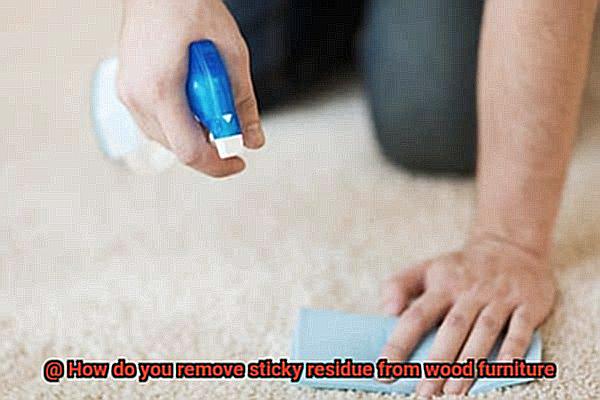
Special Care for Special Wood:
It’s important to remember that certain types of wood furniture, such as antiques or delicate pieces, may require extra care or specific cleaning methods. When in doubt, consult a professional or seek guidance from the furniture manufacturer to avoid any mishaps.
Cleaning and Conditioning the Wood After Removal
Cleaning and conditioning wood furniture after removing sticky residue is essential to restore its natural beauty and protect it from future damage. Here’s a step-by-step guide to bring back the luster and longevity of your wood.
Dust off any loose dirt or debris using a soft cloth or brush to prevent scratching.
Prepare a solution of warm water and mild dish soap. Dip a clean cloth into the mixture, wring out excess water, and gently wipe the wood surface in small circular motions. Pay extra attention to sticky residue or stains.
For stubborn remnants, mix equal parts vinegar and water. Apply the solution to a clean cloth and rub away at the spots. Vinegar’s natural cleaning properties work wonders without harming the wood.
Rinse off any soap or vinegar residue by dampening another clean cloth with plain water and wiping down the furniture.
Condition and protect the wood by applying a wood conditioner. Rub a small amount onto a clean cloth and gently massage it into the surface, following the grain direction. Let it soak for a few minutes before wiping off excess with a dry cloth.
Apply a protective finish like wax or polish to enhance the appearance and durability of the wood. Choose a product suitable for your specific wood type and follow the manufacturer’s instructions for application. Apply a thin, even layer, allow it to dry completely, then buff with a soft cloth for a sleek finish.
Testing Cleaning Solutions Before Use
Wood furniture exudes warmth and elegance, bringing a touch of natural beauty to any space. However, caring for wood furniture requires more than just regular dusting. One crucial but often overlooked step is testing cleaning solutions before use.
By taking a few moments to test cleaning products on a small area, you can prevent irreversible damage and ensure the longevity of your cherished wooden possessions.
In this article, we will delve into the significance of testing cleaning solutions on wood furniture and provide you with a comprehensive guide on how to do it effectively.
Safeguarding the Wood:
- Different types of wood and finishes can react differently to cleaning solutions, emphasizing the need to test each product individually.
- Minimize the risk of damaging or discoloring the wood by testing the solution on an inconspicuous spot, such as the backside or underside of the furniture.
Assessing the Reaction:
- Apply a small amount of the cleaning solution to a clean cloth or sponge and gently rub it onto the test area.
- Observe any adverse reactions such as discoloration, fading, or harm to the wood finish.
- Pay attention to whether the cleaning solution effectively removes the sticky residue, as this is the ultimate objective.
Ensuring Optimal Results:
If there are no adverse effects and the cleaning solution successfully eliminates the residue, it is likely safe to use on the rest of the furniture.
However, if negative reactions occur or if the residue persists, it is best to explore alternative cleaning solutions.
Adhering to Manufacturer’s Instructions:
- Always read and follow the manufacturer’s instructions when using any cleaning product.
- Some solutions may require dilution or specific application techniques for optimal results.
Seeking Professional Advice:
- If you are uncertain about which cleaning solution to use or how to test it, consult with a professional wood furniture cleaner or seek advice from an expert in wood restoration.
Preventative Maintenance
Today, we will explore the concept of preventative maintenance and its vital role in keeping your beloved wood furniture in pristine condition. Our focus will be on preventing sticky residue buildup, as no one wants their stunning wooden piece marred by unsightly stickiness. So, grab a cup of tea, get cozy, and let’s embark on a journey into the world of preventative maintenance.
Regular Dusting and Cleaning:
- Dust particles combined with oils lead to sticky residue. Let’s avoid this equation ruining our day.
- Use a soft, lint-free cloth or a microfiber duster to regularly remove dust.
- This simple practice prevents dust from settling and combining with substances that cause sticky residue.
Protect Your Wood Surface:
- Never place items directly on the wood without protection.
- Always use coasters for glasses or mugs and trivets for hot dishes or pans.
- Moisture and heat can cause absorption or warping, resulting in sticky residue formation.
Embrace the Power of Furniture Wax or Polish:
- These magical products create a protective barrier on your wood surface.
- Follow the instructions on the label and apply them periodically.
- They act as superhero shields, preventing sticky residue from adhering to your furniture.
Be Wary of Adhesives and Tapes:
- Whenever possible, avoid applying them directly to the wood surface.
- They can leave behind stubborn sticky residue that is hard to remove.
- Opt for removable or low-tack options to minimize residue risks.
Promptly Address Spills and Accidents:
- Keep an eye out for spills or accidents near your wood furniture.
- Clean up promptly with a damp cloth and mild soap.
- Ensure no sticky residue is left behind to wreak havoc on your furniture’s beauty.
By incorporating these preventative maintenance practices into your routine, you can bid farewell to sticky residue and ensure the longevity of your wood furniture.
Remember, testing cleaning solutions before use is like arming yourself with the perfect weapon against potential damage.
So, be the vigilant guardian of your wooden treasures and enjoy their natural beauty for years to come.
WgNIJ1ismRk” >
Conclusion
Removing sticky residue from wood furniture can be a frustrating task, but with the right techniques and products, you can restore your furniture’s natural beauty.
One effective method is to use a mixture of warm water and mild dish soap. Simply dampen a soft cloth or sponge in the solution and gently scrub the sticky area.
If the residue persists, you can try using rubbing alcohol or white vinegar, which act as natural solvents. Apply a small amount to a clean cloth and gently rub the sticky spot until it is removed.
For stubborn residue, you may need to repeat the process several times. Remember to always test any cleaning solution on a small, inconspicuous area of the furniture first to ensure it does not damage the finish.
To prevent future stickiness, avoid placing items directly on the wood surface without protection and regularly dust your furniture to remove any potential buildup.

